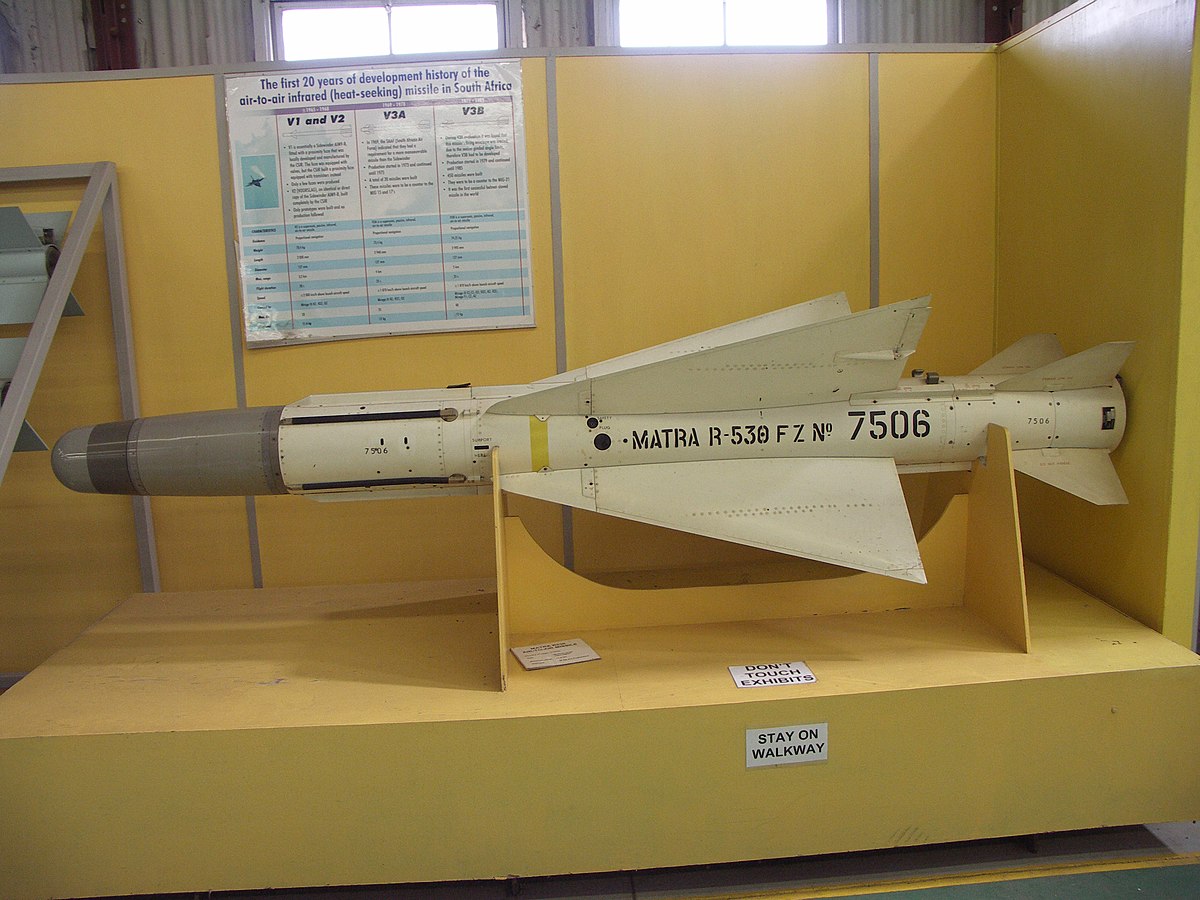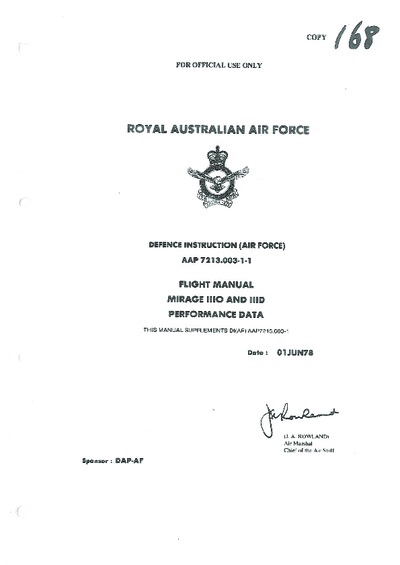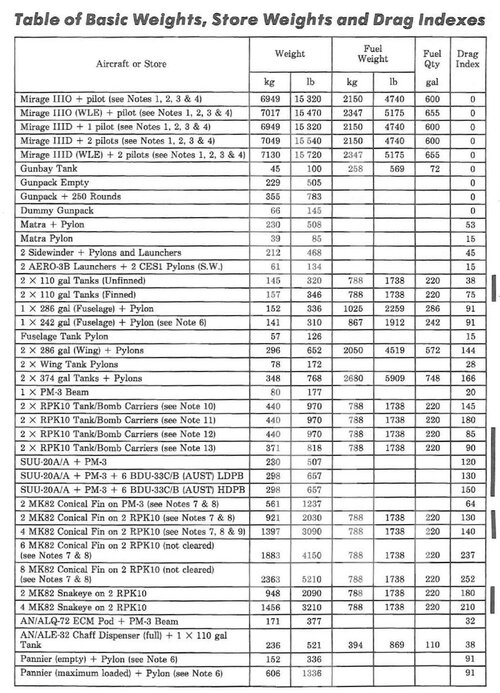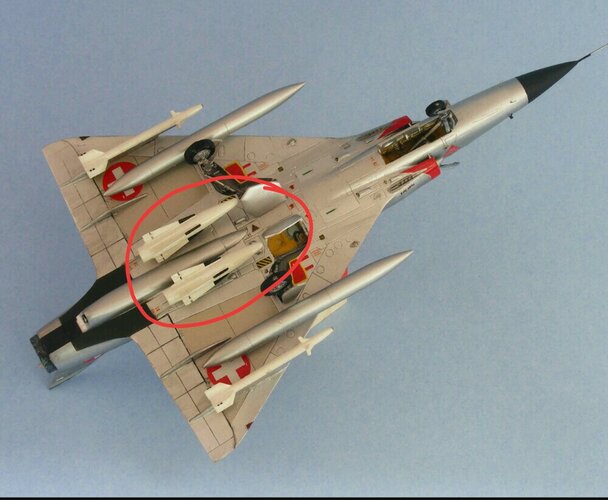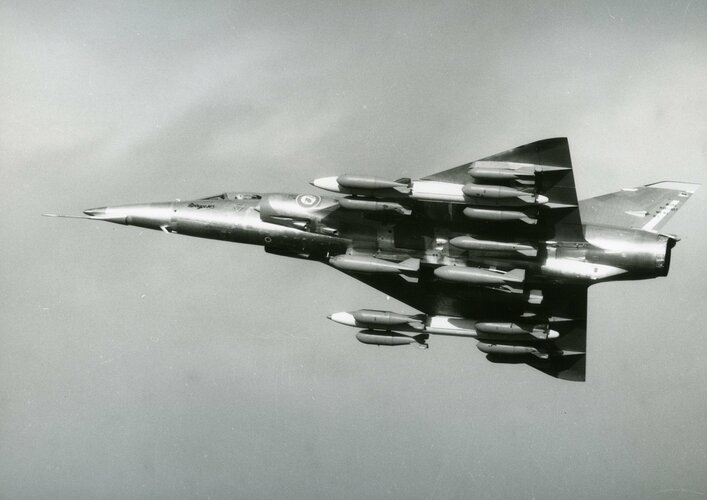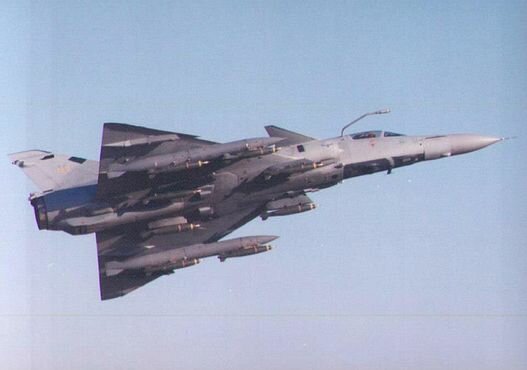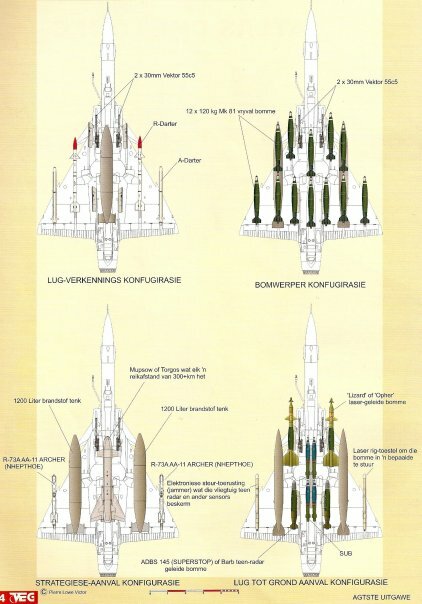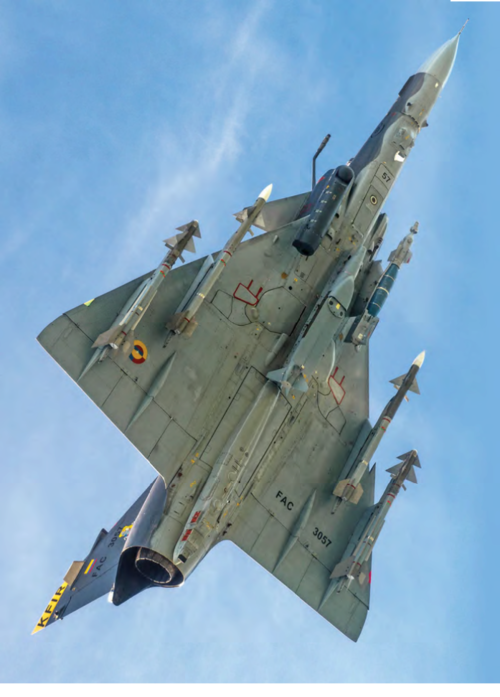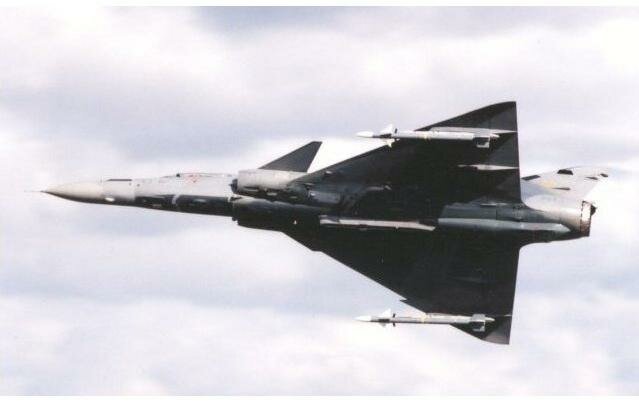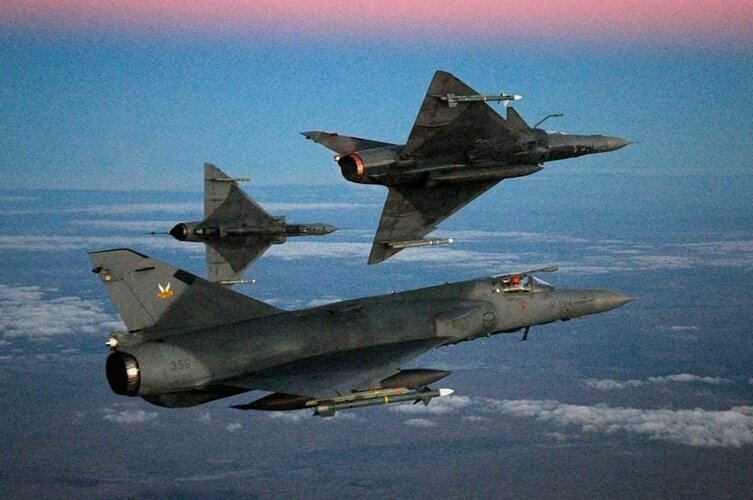All in the title. Dumb question I never pondered before...
Mirage F1s did it AFAIK. One centerline drop tank, two R530 under wings (Super 530F later), two R550 Magic on the wingtips.
Yet Mirage IIIs only seemed to carry one R530 on the centerline. The underwing pylons could fit two tanks or two R550... but never saw two R530 there.
Mirage F1s did it AFAIK. One centerline drop tank, two R530 under wings (Super 530F later), two R550 Magic on the wingtips.
Yet Mirage IIIs only seemed to carry one R530 on the centerline. The underwing pylons could fit two tanks or two R550... but never saw two R530 there.

